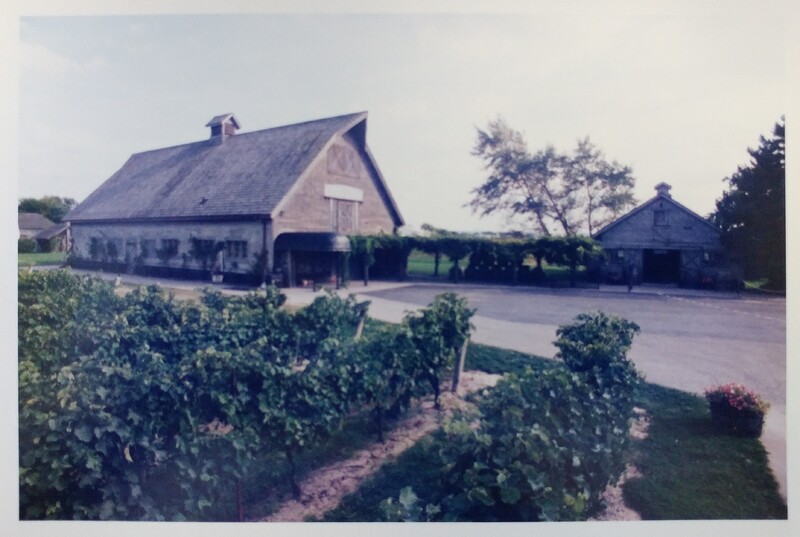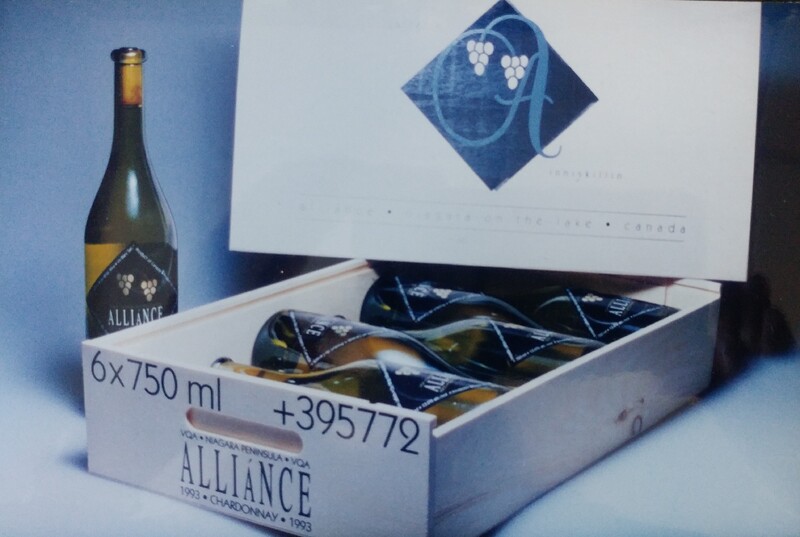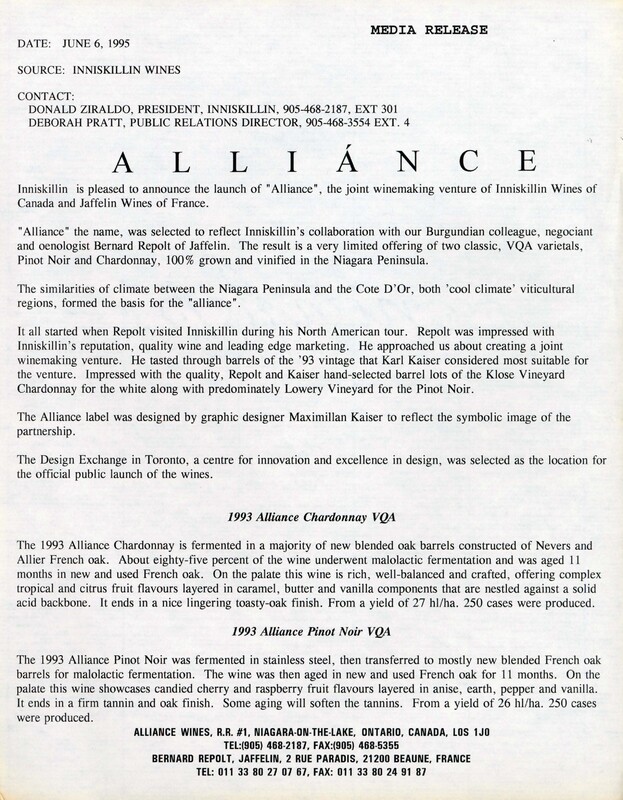Expansion
Niagara is considered a cool climate viticultural region, as are Burgundy, Germany, Oregon, and New Zealand. These regions are ideal for growing Chardonnay, Pinot Noir, and Riesling. These regions are also famous for producing icewine. The Niagara Escarpment and Lake Ontario create a unique microclimate that is able to support the growth of Vitis vinifera. Donald Ziraldo and Karl Kaiser recognized the potential for these premium grapes to thrive in the Niagara climate and were the first to grow them in the region.
The company name Inniskillin was derived from the Inniskilling Fusiliers, an Irish regiment whose Colonel once owned the land that Ziraldo Nurseries occupied. Colonel Cooper of the Inniskilling Fusiliers served in North America in the War of 1812. He was later granted crown land which he named Inniskillin Farm. This was the original site of the winery.
Brae Burn Estate
In 1978, the winery moved to the Brae Burn Estate, their current location. Brae Burn is Gaelic in origin and means "Hill Stream", a reference to the Niagara Escarpment and Niagara River. The Estate is adjacent to the original Inniskillin vineyard planted in 1974. A historic barn on the property that was built in the 1920s is home to the winery boutique. The barn is thought by some to be the work of renowned architect Frank Lloyd Wright and is a distinctive feature of the Estate.
The winery expanded by 50 acres in 1982 with the addition of the Montague Vineyard and another 50 acres was acquired in 1991. The Niagara-on-the-Lake vineyard produces single vineyards bottlings of Chardonnay, Pinot Noir, Merlot, and Pinot Grigio/Pinot Gris. To further grow their business, Inniskillin formed an import division in 1987 until the mid-1990s. This helped Inniskillin to establish itself as a respected international winery.
Inniskillin Napa
A significant development occurred in 1989 when Inniskillin purchased vineyards in the Napa Valley, creating Inniskillin Napa. The wines produced here were sold under the "Terra" label and the endeavour boosted Inniskillin's reputation in the industry. This venture continued until the mid-1990s.
Alliance
A new venture in 1993 brought about a collaboration between Inniskillin Wines in Niagara and Jaffelin Wines of Cote D'Or, Burgundy, France. The similarities in climate between the two regions provided the basis on which the partnership was formed. Jaffelin's winemaker Bernard Repolt was impressed with Inniskillin during his North American tour and approached them about a joint winemaking venture. The result was a limited offering of two classic varietals, Pinot Noir and Chardonnay. Both were entirely grown and vinified in the Niagara Peninsula.
Inniskillin Okanagan
In 1994, a new partnership was formed between Inniskillin and the Inkameep Indian Band (Okanaquen Tribe) in the Okanagan Valley in British Columbia. The Band had established extensive vineyards on their ancestral lands that were dedicated to the growing of premium Vitis vinifera grapes. Varieties included Merlot, Pinot Noir, Chardonnay and Pinot Blanc. The wine labels of Inniskillin Okanagan reflected the Indigenous heritage of the land and were designed by a local artist. This label inspired the name of the Inniskillin Okanagan vineyard, the Dark Horse Vineyard.




